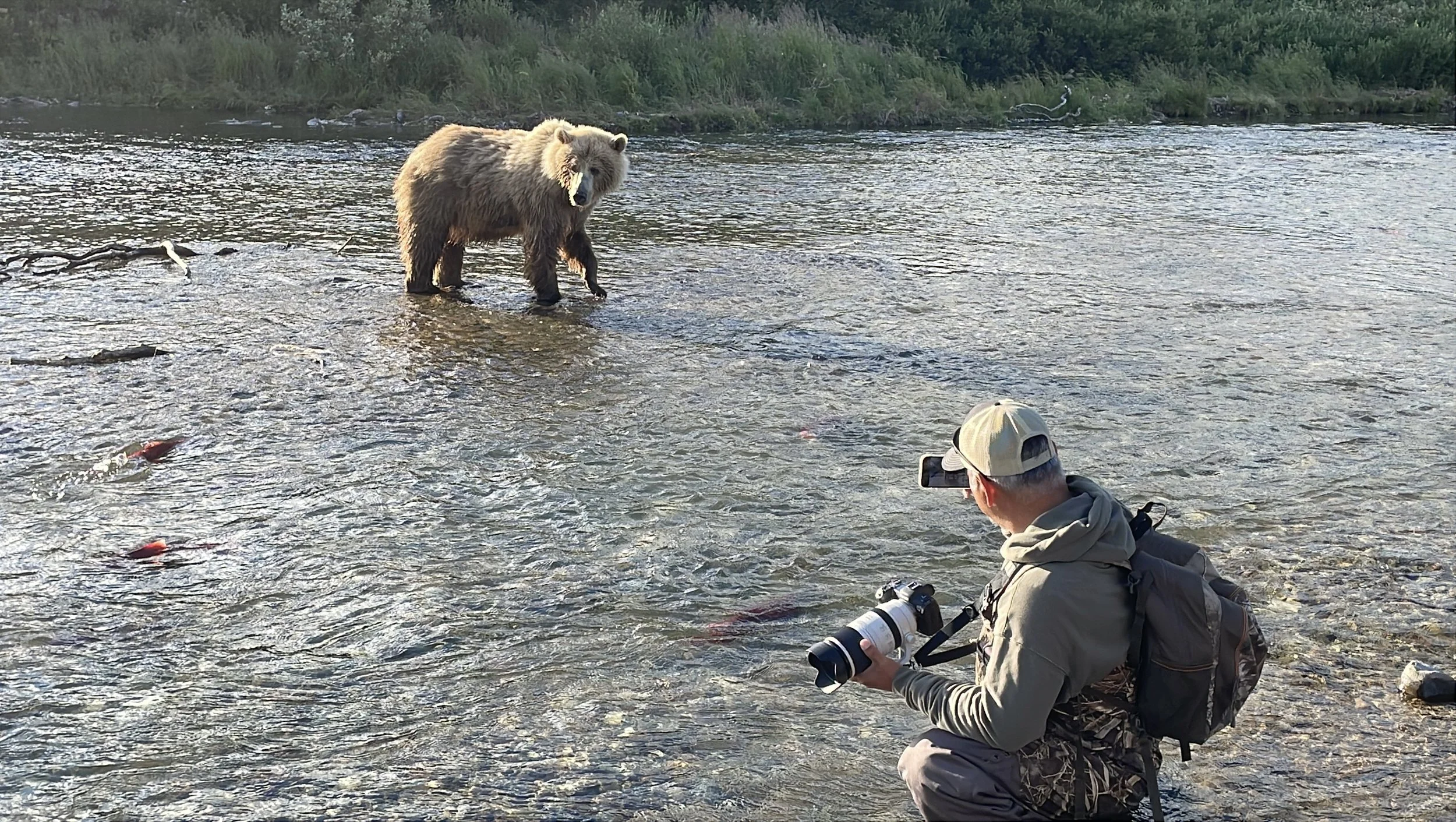Wildlife photography is so much more than just taking a picture. It’s about telling a story—one that evokes emotion, inspires awe, and sometimes even drives conservation efforts.
Through your lens, you’re not just capturing an image; you’re sharing a piece of the natural world that many people will never experience firsthand.
Polar Bears Play wrestling in the Churchill River, Canada. 1/5000, f5.6, ISO 1250
Great wildlife photography begins long before you press the shutter.
It starts with understanding animal behavior, researching the environment, and having the right gear for the job. Having good guides that know when and where to find your subject can make all the difference in the world.
Juvenile Elephant Seal. Patagonia, Argentina. 1/1600, f5.6, ISO 250
Timing your trips around migrations or mating seasons can provide incredible opportunities to witness unique behaviors.
Mating Atlantic Spotted Dolphins off Bimini, Bahamas. 1/500, f8, ISO 1000
Equally important is your equipment. While you don’t need the fanciest gear, having the right lens and a camera that performs well in low light can help make your shots better.
Arctic Fox off Churchill, Canada. 1/1600, f11, ISO 640
HOT TIP. Always carry extra batteries and memory cards—you never know when the perfect moment will happen. If nothing else I shared doesn’t resonate, remember this tip… I learned this one the hard way.
Blue Sheep Kibber Valley, Himalayas, India. 1/2500, f11, ISO 2000
Capturing dramatic compositions is key to creating images that stand out.
Use natural light to your advantage, whether it’s the golden glow of sunrise or the soft hues of sunset. Pay attention to your background and how it might complement your subject.
Sealion hunting baitballs off Magdalena Bay, Baja. 1/500, f8, ISO 1250
For fast-moving animals, mastering your camera’s focus settings is essential. Practice panning with moving subjects to achieve sharp focus on the animal while keeping a sense of motion in the image. And don’t be afraid to experiment—sometimes, the unexpected angles produce the most compelling results.
Jaguar hunting a yellow anaconda, Northern Pantanal Brazil. 1/4000, f5.6, ISO 1600
Wildlife photography comes with a responsibility to respect the animals and their environment.
Always keep a safe distance and avoid actions that could stress or disrupt the animal’s natural behavior. Remember, a great shot is never worth compromising the well-being of the wildlife you’re photographing.
Lemon Shark getting its teeth cleaned by a young remora off Tiger Beach. 1/320, f9, ISO 400.
While portraits of animals are beautiful, my personal favorite images are behavior shots.
There’s something magical about capturing an animal in action—whether it’s a whale breaching, a bird feeding its chicks, or a predator stalking prey.
Behavior images tell a story and bring the animal’s world to life in a way that static portraits simply cannot.
Bobcat catching red winged blackbird, Rio Grande Valley, Texas. 1/1000, f7.1, ISO 5000
One of my most memorable shots was of a bobcat catching a bird while jumping through the air. The image was not perfect, however the long hours we put into trying to capture this wild moment is why this image will forever be one of my favorites.
Giant River Otters, Northern Pantanal, Brazil. 1/1600, f7.1, ISO 1000
Wildlife photography is a journey of patience, skill, passion, and a lot of luck!
Each image you capture is a window into the natural world. It is your chance to inspire, educate, and protect our beloved wildlife.
So grab your camera, step into the wild, and start telling stories.













